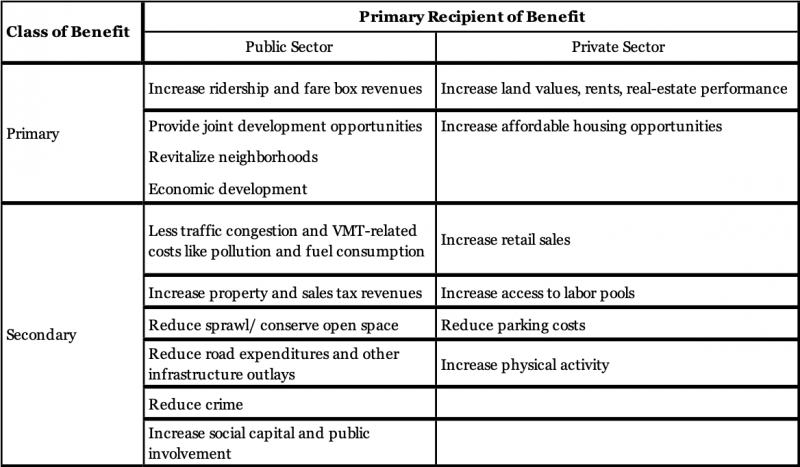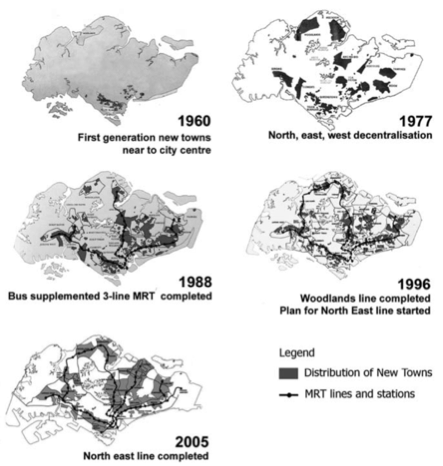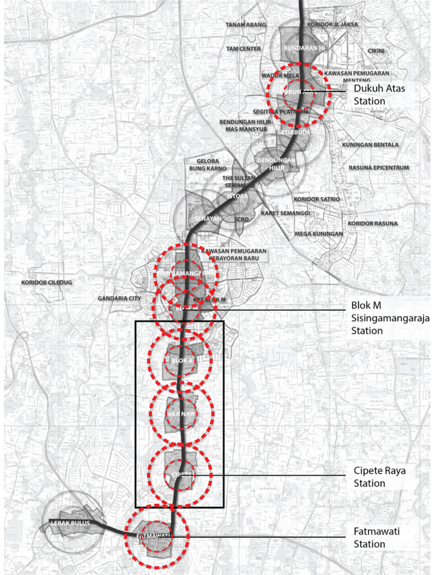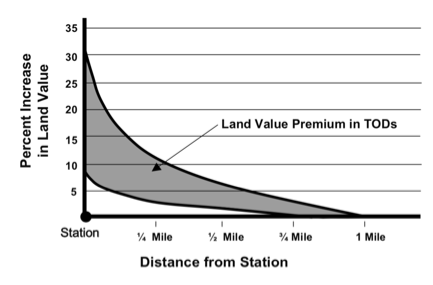Unlocking the potential of the mass transit system in Greater Jakarta
Jakarta, as a capital city and Indonesia's economic center, has been a strong magnet for most people in the country to work or to establish a business. However, high land price in Jakarta causes housing become less affordable, thus, living in the outskirts of Jakarta and commuting to the workplace has become a preferred option to many people. The high number of commuters travelling by their private vehicles has resulted in the unavoidable daily massive traffic jam.
As of 2016, Greater Jakarta's population was recorded at approximately 31 million people, whilst the population of Jakarta is about one third of that figure (Statistics Indonesia, 2017). In addition, vehicles in Jakarta recorded a significant growth of 7.0% p.a. on average for the past 6 years, which brought the number of registered vehicles standing at 18 million in 2016. This number was dominated by private motorcycles at 73.9% (Statistics Indonesia, 2017). Limited options of convenient public mass transportation was one of the reasons why private vehicles grew rapidly in the city.
Traffic jam has been acknowledged as the city's major problem for many years. According to INRIX Global Traffic Scorecard, Jakarta ranked 12th world's worst traffic jam in 2017 where most Jakartans spend about 63 hours in traffic congestion each year, whilst Los Angeles led the category with an average of 102 hours spent in traffic congestion annually.Consequently, Jakarta suffered an annual loss of approximately 67.5 trillion IDR or 4.9 billion USD due to the congestion including loss in productive time, vehicle operation cost, health/ air pollution, and fuel consumption (Indonesian Ministry of National Development Planning, 2017).
As Jakarta suffered significant losses due to the congestion, it is essential that the government and other stakeholders establish some efforts to minimize any potential losses in the future by developing some strategies to reduce the number of private vehicles and shift people from using private vehicles to public transportation.
Under President Jokowi's leadership since 2014, infrastructure development has been the government's main agenda for the country. Jakarta has witnessed some substantial infrastructure developments, such as Airport Train, Mass Rapid Transit (MRT) and Light Rail Transit (LRT). The Airport Train has been in operation since Q1 2018, whilst both the MRT and the LRT will have their 1st phase completed by Q1 2019.
In addition, from real estate perspective, developers and investors can contribute in reducing the congestion by developing Transit-Oriented Development (TOD) which is an integration between transit and land use to decrease automobile-dependency rate and create a more sustainable city (Suzuki et al. 2013).
This ASIA INSIGHTS will further explain the TOD concept and its implications for real estate investment opportunities in Greater Jakarta.
What is transit-oriented development?
Transit-Oriented Development is a compact and mixed-use development which is highly integrated to the mass transit stations and easily accessible by pedestrians and bicycle users (Sallat & Ollivier, 2017). World Bank's TOD Community of Practice has conducted several international studies and concluded that there are eight major principles for TOD implementation, as follows:
1.Aligning transit network and capacity, population densities, and economic densities for improved accessibility;
2.Compact development with short commutes;
3.Reinforcement of areas connected to the transit station;
4.Mixed-use development and mixed-income neighborhood planning at corridor level;
5.Provision of attractive public spaces around the mass transit stations;
6.Walking-and-cycling-friendly neighborhood;
7.Provision of integrated, accessible and excellent public transit;
8.Private vehicles demand management
Institute for Transportation & Development Policy(ITDP) provides a TOD Standard to measure achievement of any TOD projects which consists of three standards of Gold (85-100 points), Silver (70-84 points), and Bronze (55-69 points). The assessment will capture eight key principles of: (1) walk–15 points; (2) cycle–5 points; (3) connect–15 points; (4) transit–requirement; (5) mix–15 points; (6) densify–15 points; (7) compact–15 points; and (8) shift–20 points. The basic and most important requirement is that the project must be within a maximum of 1-km walking distance to a high-capacity transit station or less than 500-m to a direct service station. Otherwise, the project is not considered a TOD project.In general, Transit-Oriented Development will contribute to multiple tangible and intangible benefits for both private and public sectors, as shown in Table 1.
Table 1. Benefit of TOD
Individually, people will enjoy the benefit of the TOD from healthier air, shorter travel time which leads to higher productive time, and lower transportation and housing cost. People who live near to the transit stations in the United States spend 37% of their income on transport and housing, whilst others spend 51% (Reconnecting America 2009 in Sallat & Ollivier 2017).
However, each transit station may have different significance level of impact.Sallat & Ollivier (2017) developed the 3 Value Framework to identify the level of economic opportunities of a transit station, covering (1) node value; (2) place value; and (3) market potential value.1) The node value measures the level of importance of the station by considering the number of passengers and centrality within the network. On the other hand, (2) the place value analyzes the quality of urban fabric and availability of amenities within the surrounding area. Lastly, (3) the market potential value captures the unrealized market value of the transit station area by analyzing major demand generators (population density, employment rate, number of jobs accessible within half an hour) and supply drivers (developable land, allowable Floor Area Ratio, and market enthusiasm).
On a macro level. the mass transportation network will further trigger property development and influence urban growth pattern. For example, Singapore's Mass Rapid Transit (MRT) network led to the rise of transit-oriented new town developments surrounding the transit lines.
Figure 1 shows the dynamics of the urban growth pattern in Singapore from 1960 to 2005. In 1960, the new towns were planned within 8 kilometers from the CBD. Alongside growing network of MRT, the transit-oriented new town developments and compact residential clusters along the lines grew rapidly and created a decentralization pattern. It also caused the population of public housing to increase significantly from 9% in 1960 to 84% in 2000 (Curtis et al. 2009).
Figure 1. Singapore's urban growth pattern
Besides Singapore, both Copenhagen and Stockholm have also successfully implemented TOD principles and reached several outstanding achievements in economy as well as sustainability, such as positioning among world's top GDP per Capita, the Green City Index and UN-Habitat Prosperity Index (UN Habitat 2015).
Promising infrastructure development progress in Greater Jakarta
Currently, Jakarta has a commuter train line network in place which connects several municipalities at Jakarta's outskirts to Jakarta city center. Most users are lower-middle to middle class groups and its cost per trip is affordable at about IDR 3,000 per trip (±22 cents USD). During peak hours, the trains are always extremely packed. This could be the reason why it hasn't successfully shifted people from commuting using private vehicles to the public transportation. MRT and LRT are foreseen as more convenient mass transit modes and expected to target middle to upper-middle segment groups to shift to the public transportation and ultimately to reduce city's traffic congestion.
In the past, Jakarta witnessed a non-completed infrastructure of monorail which left some concrete poles abandoned along some road corridors. Fortunately, we have seen a promising development progress for both the MRT and the LRT where their progresses are according to the agreed timeline. Additionally, Jakarta has completed the Airport Train which connects Jakarta CBD and Soekarno-Hatta International Airport that has already been in operation since Q1 2018.
Map 1 on the last page shows future connectivity of Greater Jakarta mass transit lines of MRT, LRT, and Airport Train.
Government's support to boost transit-oriented development
In order to boost and control the growth of Transit-Oriented Development in DKI Jakarta province, the government offers some incentives or disincentives to land and/or building owners which is regulated under DKI Jakarta's Gubernatorial Regulation No. 44 Year 2017 of Transit Oriented Development.
According to Article 11 in the regulation, the incentives can be in a form of, as follows:
1.Provision of direct access to the mass transit stations;
2.Tax allowance;
3.Levies reduction;
4.Compensation;
5.Easing of permit process
In contrast, the disincentives will apply to the land/building owners who are not in compliance with the TOD planning principles and can be in the following form:
1.Higher taxes/ levies;
2.Restrictions on the provision of infrastructure and facilities; and / or
3.Prohibition of development for the utilization of space that has been developed.
Impact on the real estate industry
In terms of supply, Greater Jakarta has seen growing property supply, particularly residential and commercial properties which are located within close proximities to the mass transit stations.
Jakarta MRT has determined several areas within a radius of up to 700-m from each transit station as TOD area as shown in Figure 2. Most projects located along the MRT line are office towers and upper-middle to upper class residential towers.
Along LRT lines, a state-owned company has planned and launched TOD projects at several LRT stations consisting of 1,000+ middle class apartment units, commercial uses, and public amenities.
Figure 2. TOD areas along Jakarta MRT line
The mass transit system will likely have a positive influence on price and rental growth of the property. Renne (2009) had observed plenty hedonic regression studies about relationship between land value premium and distance to the transit station which showed that the land value premium ranged from 8% to 30%. The further the location from the transit station is, the lower the premium will be. In the United States, average housing price in a TOD neighborhood in 2004 was recorded as 350% more expensive than the average one (Infrastructure USA 2015 in Sallat & Ollivier 2017).
Figure 3. Land value premium VS. distance from transit station
Implications for investors
The long-awaited mass transit system in Greater Jakarta of MRT and LRT will be a game changer to the city through its potential contribution in reducing traffic congestion, decreasing automobile-dependent lifestyle, and shaping urban growth pattern. The rise of Transit-Oriented Development which is adjacent to the transit stations is foreseen to be a sought-after investment to the investors. It also improves the opportunity of partnership between public and private sectors as the lands in most TOD projects are owned by the public sector.
During pre-investment stage, investors can assess the project using TOD standard as initiated by ITDP and also assess the economic opportunities level of the transit stations using node value, place value, and market potential value. Additionally, it is also essential to review whether the TOD project is in compliance with the regulation and whether we will receive any incentives from the government.
Strategic location and good accessibility to the MRT and LRT are key points for a successful investment strategy, particularly for rental properties. Once both the MRT and the LRT are completed, it is expected that good properties that are well connected to the mass transit system will enjoy more robust rental income and property price growth.Sources:
Ashford Publishing; Adhi Karya; CBRE; Colliers International; Indonesian Ministry of National Development Planning; INRIX Global Traffic Scorecard; Institute for Transportation & Development Policy (ITDP); Jakarta Post; Jakarta Propertindo; Jakarta MRT; Statistics Indonesia; UN Habitat; World Bank Group
Our complimentary publications inform you about current developments in the Asian real estate market and key trends in the real estate industry. Sign up to receive them automatically.




